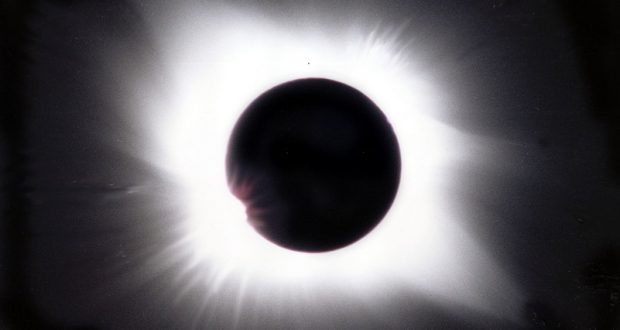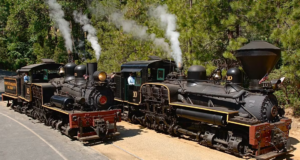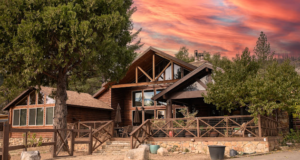The road up 8,500 foot Relay Ridge in eastern Utah was recommended for 4-wheel drive or rental vehicles only. So, hoping for an outcome more high-minded than high-centered, I dropped the rugged VW Passat, painted seriously technical Candy White, into low gear — and put the pedal to the plastic.
It had been 26 years since I had had observed my first, and only, total solar eclipse, an ethereal experience. I had resolved at the time not to miss this one, then decades in the future. During those decades, many doors in my life opened and closed and, often in error but seldom in doubt, I had strode through all of them with nary a thought as to what lie on the other side. Still, there was always at least one aiming point of certitude — I would not miss this.
So, on August 18 Martha and I loaded the dogs and gear into the car and started out at 4:30 a.m. Our route went over Tioga Pass and then through Central Nevada to Elko. The publicity for the event had been intense, so I charted several alternative back road routes beginning in Elko in order to avoid the expected “nightmarish” traffic jams. Presumably, the entire population was headed for the centerline across the river gorges, lava fields, and uplift ranges of the Great Basin. We carried extra gas, food, water and music.
So, set to the incomprehensibility of geologic time, astronomical distance and John Fahey guitar music, we were ridiculously well prepared for a solar eclipse, the zombie apocalypse — or both.
 The Nevada high desert with the sage in bloom: Martha leans over and confides, “if you don’t slow down I’m going to throw up all over you and the Beagle.” Trumpet the Beagle looked up. I do everything too fast, especially driving, and some of the desert roads were pretty rough.
The Nevada high desert with the sage in bloom: Martha leans over and confides, “if you don’t slow down I’m going to throw up all over you and the Beagle.” Trumpet the Beagle looked up. I do everything too fast, especially driving, and some of the desert roads were pretty rough.
The actual planning had begun about five years ago. In 1991, for the last total solar eclipse, there was no Google Earth and only limited printed material that was generally found in scientific journals. Now, I could evaluate each geographic feature along the centerline for view, weather, access and alternate routes to facilitate rapid last-minute shifts in position in case of weather.
I settled on a location east of Rexburg in southeastern Idaho. Relay Ridge is about five-miles long and runs roughly northwest to southeast. It’s so named because of several telecom relay towers placed along it. It is accessible by an eight-mile-long rough service road from the north. At 8,500-feet, it has a commanding view of the Snake River Valley to the west and Teton Mountains to the east. Now we were underway, over Tioga and on into Nevada.

It’s a long trip for the dogs and we stop often to walk them.
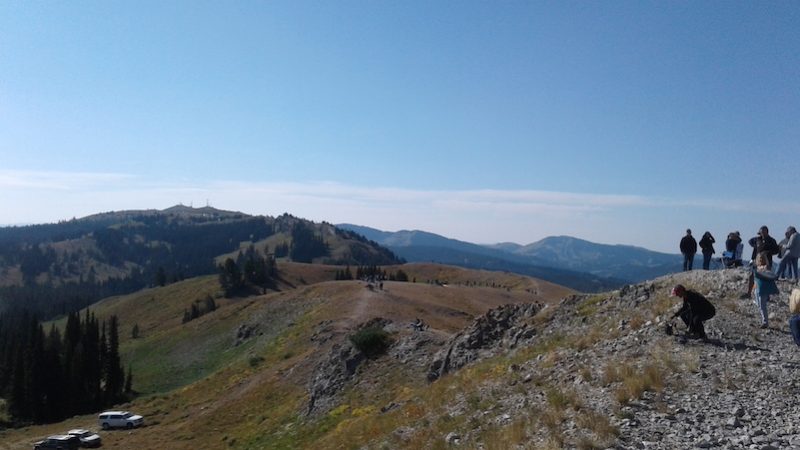
Looking south along Relay Ridge. In the distance, just below the towers on the high point, was a mini-city of tents and trailers.
We arrived on Sunday, the day before the eclipse, and made our way to the top of the ridge. When I had identified the location years before, I assumed there would be few willing to make the trek to the relatively remote area, if any. As it turns out, in the last year the location was widely identified as one of the best viewing spots in the U.S. and we were met with the sight of hundreds camped along the four-mile long ridge. There were scientists and camera gear guys. There were moms with kids and dusty people on quads in camo garb. There was the dreadlock tribe. It was a fair sampling of humanity in 2017.
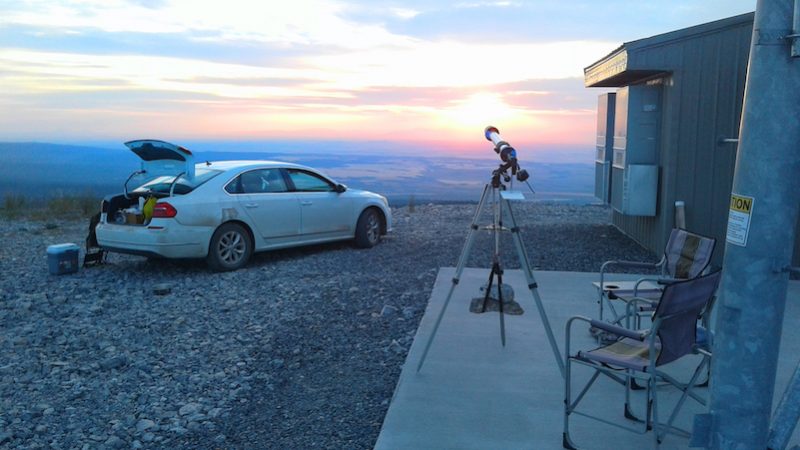
We set up on a high point near a relay tower and spent a windy night.
My vintage 1964 Toyo small telescope set up with projection screen was perfect for the occasion. High winds necessitated suspending several large rocks below the tripod for ballast to keep it from being blown over.
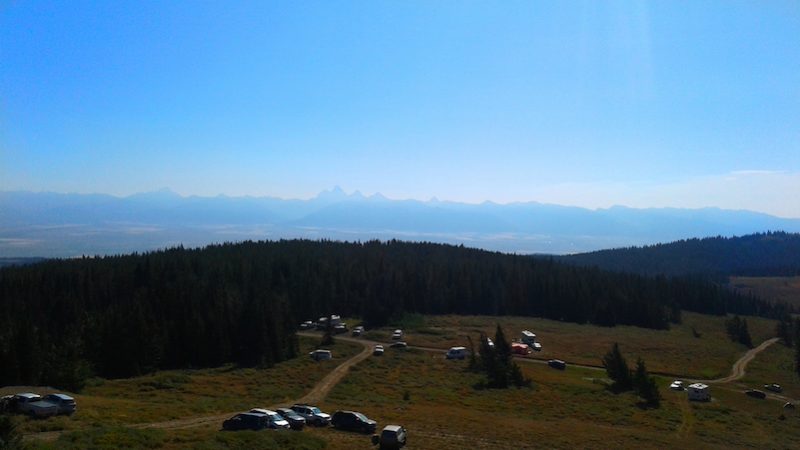
Campers on the ridge below us and Grand Teton in distance.
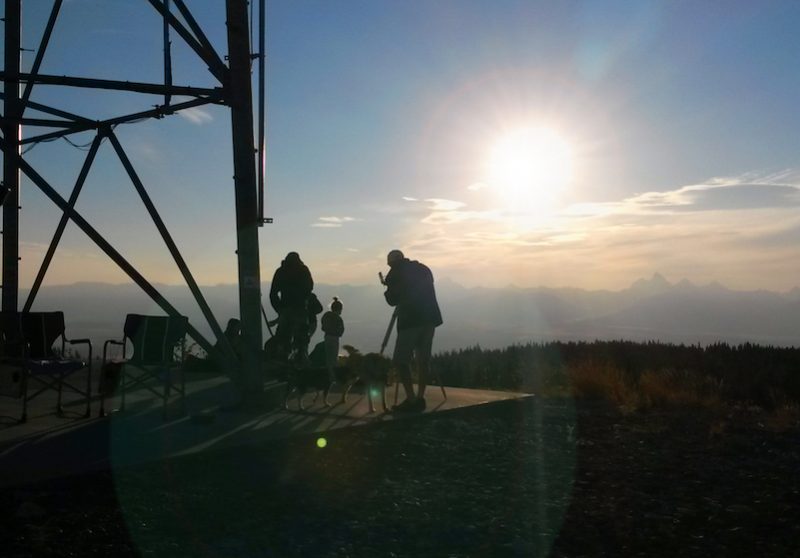
Before sunrise, people began arriving from their camps just below the ridge.
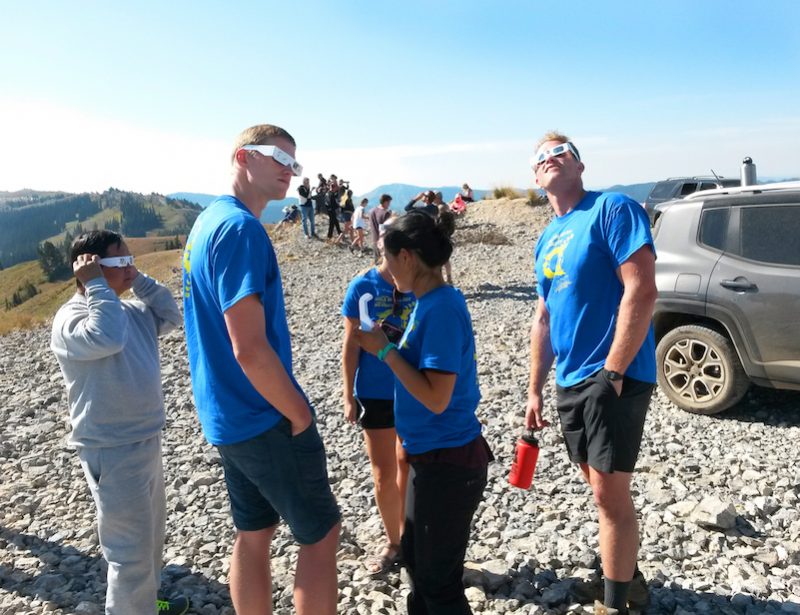
They began milling about, forming and reforming into small groups like those little oil globules on the surface of chicken soup when it’s cold and you don’t eat it fast enough.
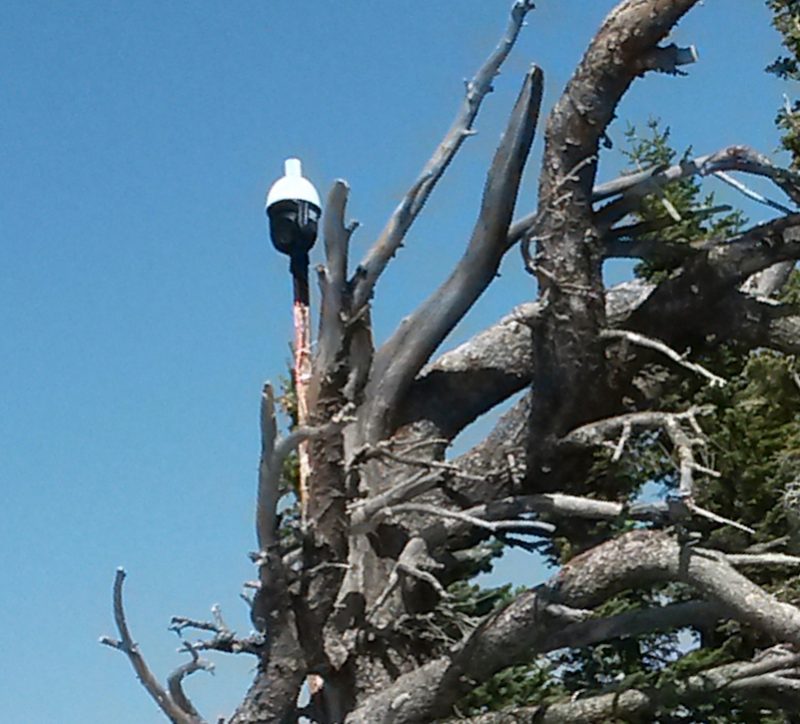
A scanning security camera at the tower seemed to be enjoying the experience. At one point I waved to it and it waved back by scanning up and down. Later a drone flew over and buzzed around it. They seemed to like each other. I think that later they got a room in Rexburg.
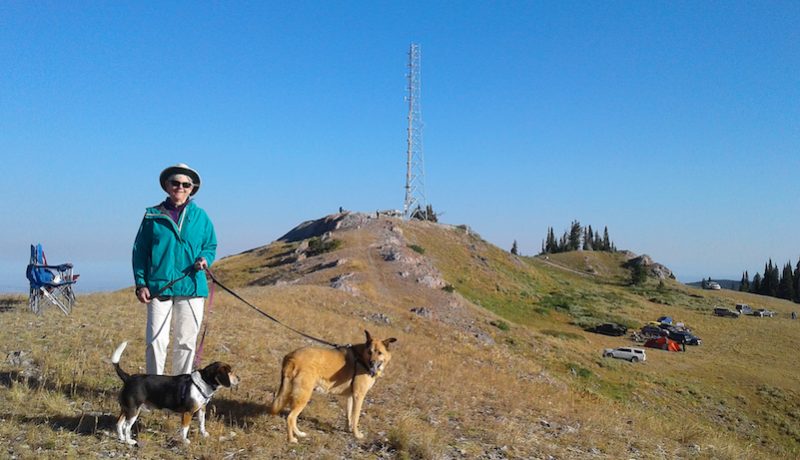
We walked the dogs along the ridge. Our viewing location was at the tower in background.
First contact, when the Moon first touches the edge of the Sun was calculated to happen at 10:15 a.m. As that time approached the crowd started becoming more energized. Everyone was putting on eclipse glasses and adjusting cameras. Astoundingly, the box helmet actually fit this guy’s head perfectly.
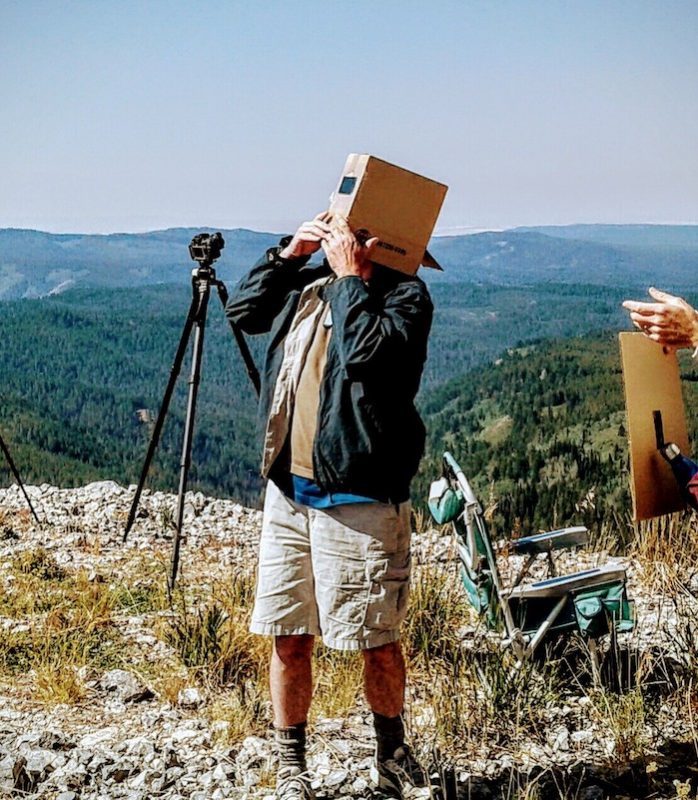
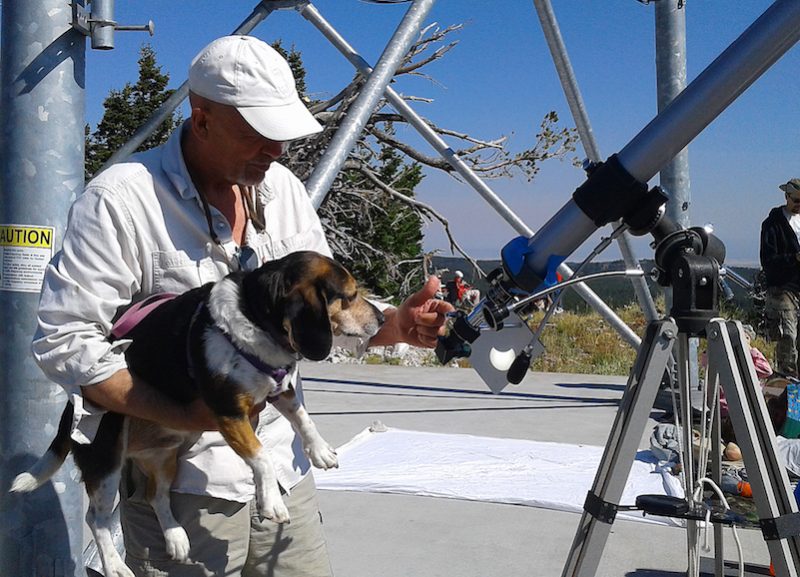
Trumpet the Astronomer Beagle observes on the projection screen just after first contact.
The sunlight progressively dimmed over the course of the next hour as the disk of the Moon encroached further onto the disk of the Sun. About five minutes before totality the light began taking on a strange flat tone and shadows on the ground focused sharply. People put on jackets and wrapped themselves in blankets as the temperature dropped and the wind picked up.
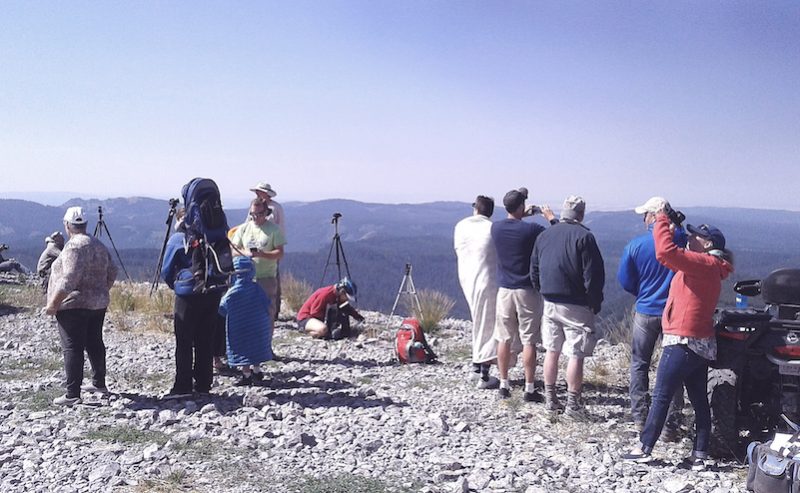
About three minutes before totality everyone gathered on the west side of the summit to await the approach of the shadow from over the horizon. Suddenly, the horizon darkens!
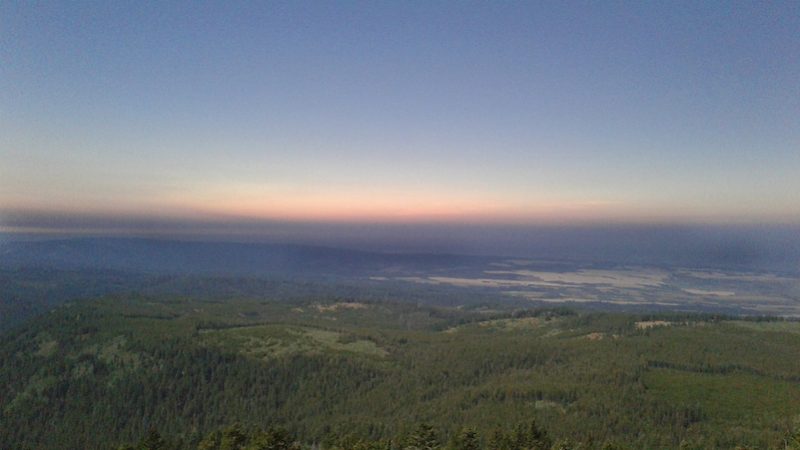
…and then darkens more, as the shadow approaches at 1,800 miles per hour. Where we were, the western horizon was about 60 miles away, so it would take the shadow about two minutes to cover that distance. Everyone was quiet. I looked over in the silence to see that the security camera was watching with us.
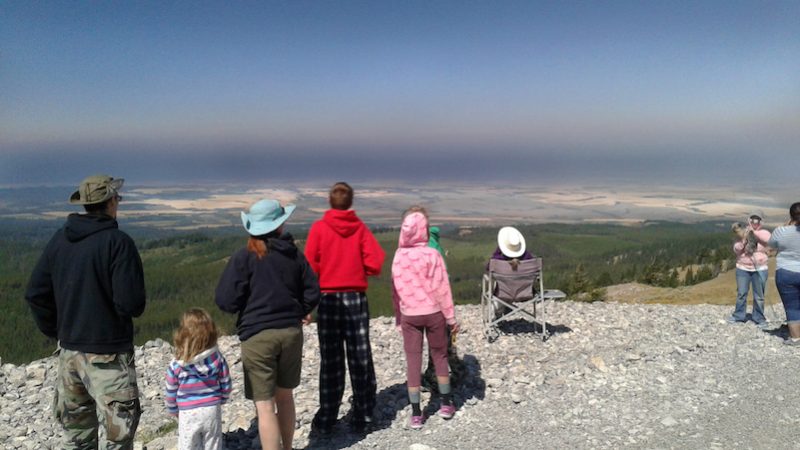
And then someone said, “there it goes…” Everyone removed their glasses, and looked up.
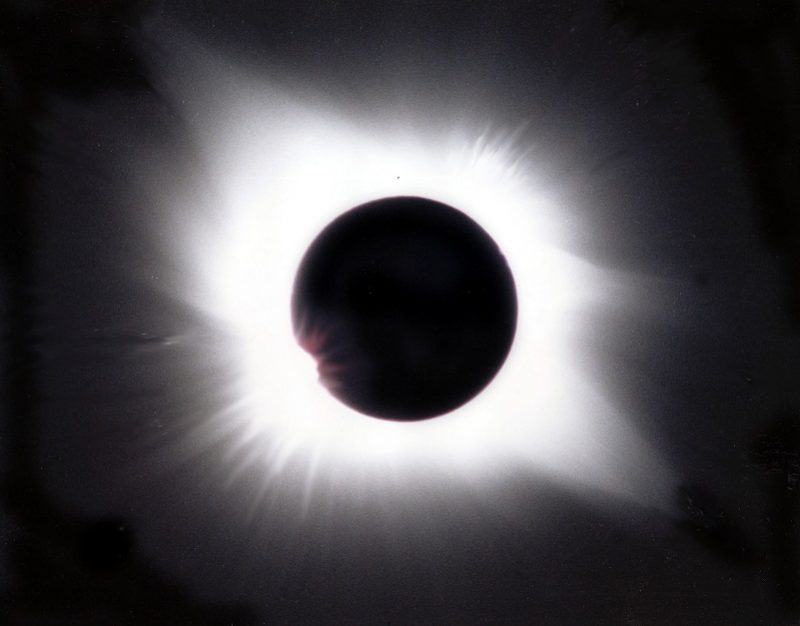
It was as I had remembered from 26 years ago, at once indescribably dark and indescribably bright — a hole in the sky.
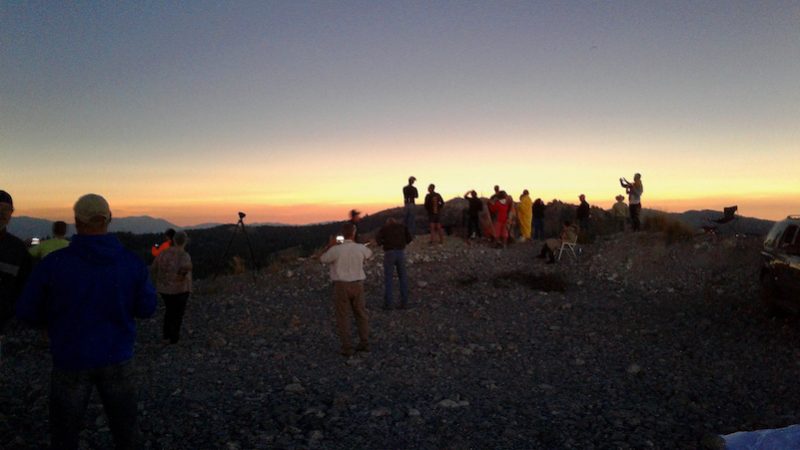
As it was in 1991, we witnessed a stunning 360 degree sunrise/sunset on the horizon. The stars were out.
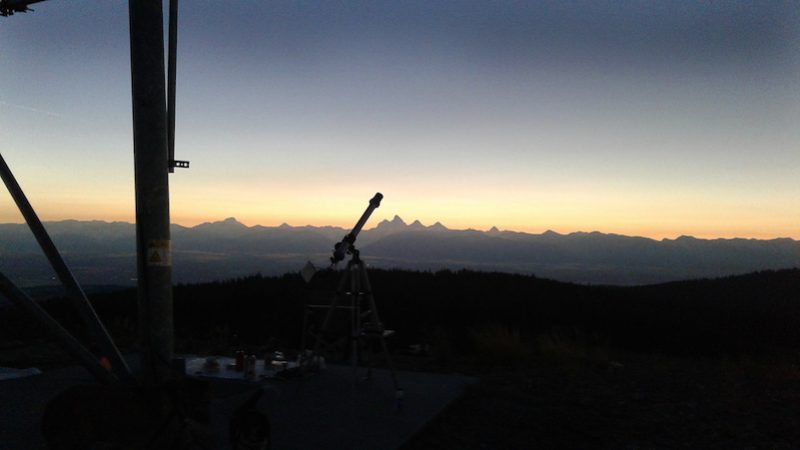
Twenty five miles to the east, the 13,800 foot Grand Teton could be seen in silhouette.
Glancing over I noticed that the Moon had not only eclipsed the Sun but also Trumpet the Beagle, who now stood alone and dejected in the shade, having been moved — if only temporarily — out of the center of the universe.
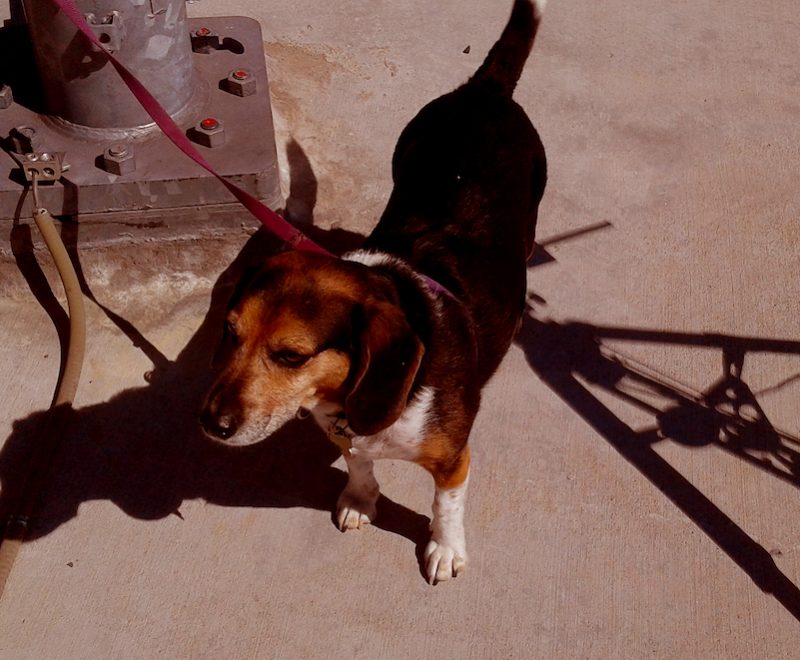
And then, after more than two minutes, the sunlight suddenly returns and a cheer goes up. We watch the shadow race off to the east, over the Grand Teton and into the distance. The air warms, and soon the day is back to normal.
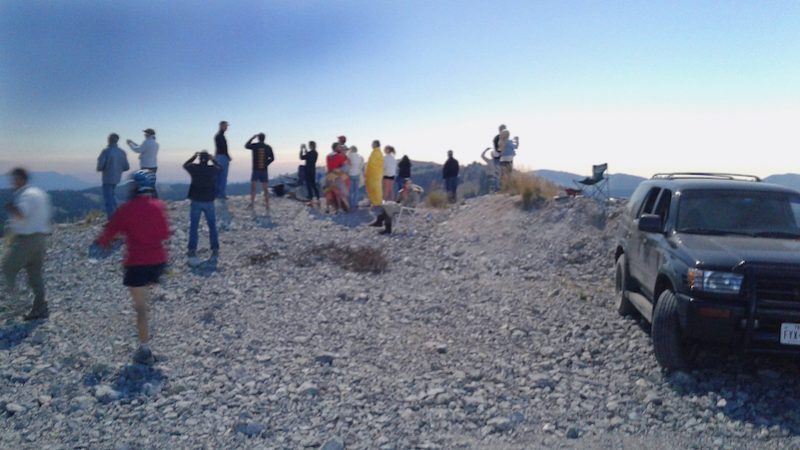
The next eclipse visible in the U.S. will cross from Texas to Maine on April 8, 2024.

